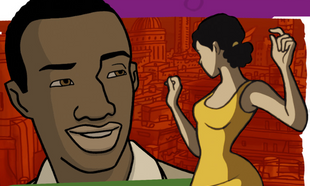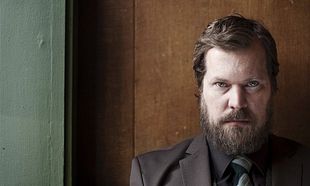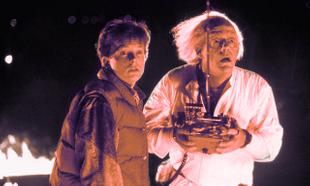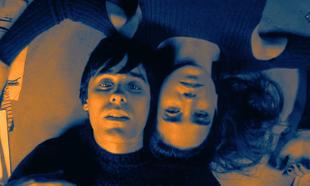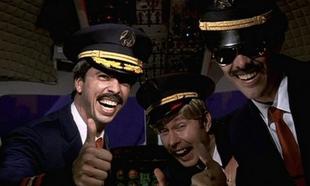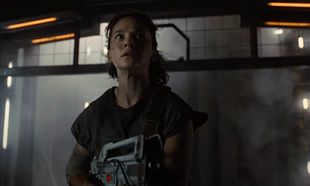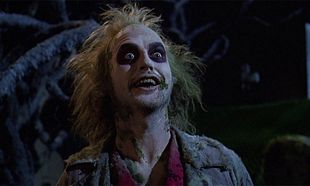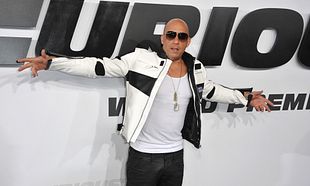Post-apocalyptic movies seem to go through phases of popularity with filmmakers, and the themes and issues they explore are often tied up in the fears of the time in which they're made.
In the '70s, it was civil unrest and political disintegration. In the '80s, the threat of nuclear war loomed large, while the '90s and '00s were more concerned with ecological disasters and the threat of pandemics.
Yet, in all of them, the focus is often on ordinary people survive in extraordinary circumstances, and how humanity survives adversity.
Here's our pick of ten of the best post-apocalyptic movies.
10. 'THIS IS THE END' (2013)
This one might be bending the rules somewhat, but it is technically post-apocalyptic as it's set immediately after the rapture. What makes it so unique is how it places it not in some all-American family, or even some crack military protagonist, but rather utilising dumbass, self-centred celebrities just trying to survive. All the surprise cameos aside, this is an incredibly well-crafted, blackly funny comedy.
9. 'A BOY AND HIS DOG' (1975)
Way before 'This Is The End' explored the idea of comedy in post-apocalypse, 'A Boy And His Dog' did it, albeit it with a far more absurdist take on it. Starring a pre-fame Don Johnson and based on Harlan Ellison's novella of the same name, 'A Boy And His Dog' served as a major touchstone in the development of the landmark role-playing game series 'Fallout'. It's a completely bizarre idea, one that barely makes sense when written down. Essentially, Don Johnson's character is traversing the wastelands of Kansas with his dog, Blood, who just so happens to be able to speak to him telepathically. After that, it just keeps getting weirder and weirder.
8. 'LOGAN'S RUN' (1976)
It's quite telling that the turbulent, crisis-ridden '70s gave birth to some of the most well-known post-apocalyptic movies in American cinema. Set inside a glittering city filled with beautiful people who never age past thirty, 'Logan's Run' may have been a commentary on youth's infatuation with youth, but it also spoke on how decadent societies block out the horrors around them by any means necessary. Some of the special effects are dated, but the ideas and themes it explores are still prescient to this day.
7. 'A QUIET PLACE' (2018)
It's telling that John Krasinski repeatedly cited 'Jaws' as his inspiration in 'A Quiet Place', not only in how it's about gesturing towards the monster rather than showing it outright, but also how placing the horror and the threat at a family unit's doorstep makes it much more potent. Emily Blunt and Krasinski's on-screen dynamic is thrilling to watch, but also in how it grabs and holds tension without resorting to cheap thrills. Easily the best post-apocalyptic movie of the past ten years.
6. 'WALL-E' (2008)
Although it might be hard to believe it, 'WALL-E' manages to blend together post-apocalyptic sci-fi, a story about environmentalism, animation, and a romantic comedy - and it not only works, but is a devastatingly beautiful story. Not only that, it's told with a level of simplicity that doesn't feel like it's scrimping on anything, nor does it feel like it's glossing over anything. It's a remarkable exercise in using only what's needed to tell a story, and in doing so, reminds us how big ideas don't always need to be communicated using grand, operatic ideas.
5. '28 DAYS LATER' (2002)
Eschewing cinematic flourishes for down-and-dirty, guerilla-style filmmaking, Danny Boyle's take on the zombie apocalypse in modern England hasn't lost any of its impact in the intervening years. Cillian Murphy's vital, unfiltered performance carries the movie right through to its stunning climax, and Brian Eno's 'An Ending' is one of the most haunting needle drops in a movie of the past twenty-five years. It's harrowing and horrifying in equal measure, something that a lot of zombie apocalypse movies fail to balance correctly.
4. 'INVASION OF THE BODY SNATCHERS' (1978)
What makes 'Invasion of the Body Snatchers' such a disturbing movie is not just in the very idea of human beings replaced with generic copies, but in how we're actually seeing the apocalypse take place during the movie, not to mention it being over and done with about a third of the way through. There is absolutely no way any of the characters can stop it happen, but they're so desperately trying to save themselves from it that they don't yet realise it's all over until the horrifying final moment when Donald Sutherland turns to face the camera, raises his finger, and screams right down the lens at the audience.
3. 'MAD MAX: FURY ROAD' (2015)
As we've previously opined, 'Mad Max: Fury Road' is not only the greatest action movie ever made, it's also carrying with a fascinating examination of power dynamics in society. Immortan Joe, played with gusto by the recently departed Hugh Keays-Byrne, imprisons women inside his fortress, even though he's impotent, can barely breath, and thinks only of them as possessions. On top of that, you also have the idea of potential rebirth in the world being prevented because it suits those in power to keep the downtrodden further down. There really are some fascinating themes and ideas being explored in the movie, along with the most jaw-dropping action sequences you'll ever see on screen.
2. 'THE DAY AFTER' (1983)
While we may now live in a world that has long since seen the end of the Cold War and the threat of nuclear apocalypse, it was a very real threat in the '80s. Two movies of the era did more to humanise the idea of nuclear holocaust than any demonstration or political movement. One was a BBC TV movie called 'Threads', released originally in 1984 and hasn't been shown on television for almost twenty years. The other was 'The Day After', which was originally a TV movie in the US but was released in cinemas in Ireland, the UK, and around the world.
Set in a small town in Kansas that just so happens to be near a nuclear missile silo, it follows the townspeople as they suffer through a nuclear war and attempt to survive in the wasteland that follows, knowing that they are facing almost certain death from nuclear radiation. What makes 'The Day After' so disturbing and so powerful is not just in how it doesn't even attempt to sugarcoat the impact of nuclear war, but how it places it right in the middle of a small community. Though the characters are played by actors like Jason Robards, John Lithgow, Steve Guttenberg and Amy Madigan, they look and sound like people you might know.
The impact of 'The Day After' was so widespread that it influenced then-US President Ronald Reagan to reevaluate his stance on nuclear weapons, not to mention being one of the few US movies shown on national television in the Soviet Union.
1. 'CHILDREN OF MEN' (2006)
'Children of Men' is such a devastating story because it's not in how it shocks you with characters' deaths, or how humanity is simply getting on with itself while it's slowly dying off, or even in how Alfonso Cuarón makes it all look so believable by using handheld footage. It's in how the entire atmosphere of the world seems choked in hopelessness.
All of the characters seem to shuffle around, nobody's really interested in taking care of themselves, everyone looks tired and worn out, and you get the sense that all of them have accepted their fate, to some degree or another. There's a scene when Pam Ferris' character, a midwife, describes how the eventual collapse in humanity happened. It's told with such bare description, but done in such a way that it's completely believable. People just... stopped having babies. Even when she and Clive Owen's character explore the empty school, you get the sense that their world has long been without hope or laughter before all this happened to them.
Yet, in spite of all this, 'Children of Men' is an examination of hope and faith in the face of unrelenting despair and damning futility. We're also faced with the question of whether or not humanity deserves a second chance. Indeed, the very idea of Kee giving birth in the middle of a warzone is just laced with all kinds of themes. That entire sequence, in fact, is breathtaking. Soldiers, anarchists, all of them stunned in silence, as the child is walked out through the carnage and spirited away to some unknown future.

